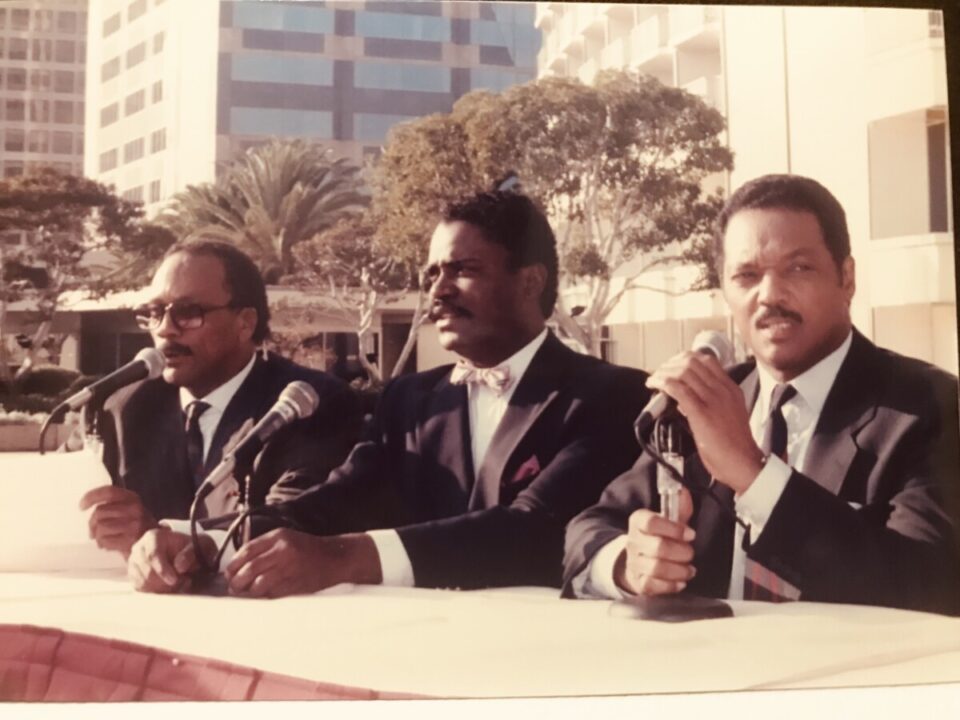‘The Jesse Jackson Show’ Was Another of His Media Ventures
When ‘Q’ Called Ebony, ‘Our Conversations Were Bonkers’
Cuban Journalist Stranded in Peru, Seeks Asylum
Short Takes: Detained in Iran; first Black leader of U.K.’s Conservative Party; Michele Norris; newspapers’ political endorsements; election coverage by Howard and Morgan State universities, National Association of Black Journalists; Aki Soga; Ashley Alvarado; Martin Ortiz; Robert Hernandez; Walter Middlebrook; Colorado Ethnic Media Exchange; Urban One’s Hispanic outreach; Mark S. Luckie; Jason Rezaian; “a new newsletter delivering a weekly dose of Black life and culture around the world”;
Covering the Darien Gap; global trend: accusing journalists of financial crimes; Russians’ desire for stronger African media presence; Morocco stalking of freed journalists; Guinea-Bissau’s impoverished journalists; Nigerian newspaper accused of sedition; forced conscription of Burkino Faso journalists.
Support Journal-ismsDonations are tax-deductible.
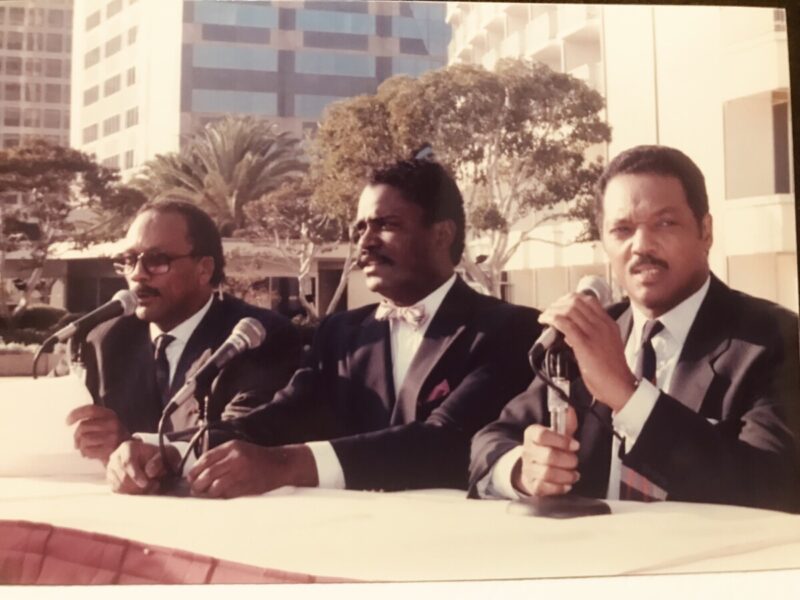
From left, Quincy Jones, Kenneth Walker and Jesse Jackson at the 1990 National Association of Black Journalists convention in Los Angeles. (Credit: Jason Miccolo Johnson)
‘The Jesse Jackson Show’ Was Another of His Media Ventures
Every picture tells a story. It was 1990 in Los Angeles, and Quincy Jones, who died Sunday at 91, was part of a news conference to promote the new hour-long “The Jesse Jackson Show.”
With him were Kenneth Walker, a previous honoree and member of the National Association of Black Journalists, and Jackson. Walker was senior producer. He is a former Washington Star and ABC News reporter who was also an anchor on the short-lived “USA Today” television show. He would later become an Africa correspondent for NPR. Van Gordon Sauter, a former president of CBS News, was another executive producer.
The weekly show debuted on 130 stations nationwide under a syndication arrangement with Time Warner and Quincy Jones Productions, and lasted one season. Howard Kurtz wrote about it for The Washington Post, and Jeremy Gerard for the New York Times.
 That’s not the end of the story. Adam Clayton Powell III (pictured, by Sharon Farmer), a media veteran who is now executive director of the University of Southern California’s Election Cybersecurity Initiative, and director of the, Annenberg Center Washington Programs, takes it from there.
That’s not the end of the story. Adam Clayton Powell III (pictured, by Sharon Farmer), a media veteran who is now executive director of the University of Southern California’s Election Cybersecurity Initiative, and director of the, Annenberg Center Washington Programs, takes it from there.
He messaged Journal-isms:
 “Quincy and I were the executive producers of the hour-long ‘ ‘Jesse Jackson Show,’ which was a Warner Bros. production that ran in syndication 1990-91, then moved to CNN in the fall of 1991 as a weekly half-hour. Lee Thornton (pictured), whom I promoted to line producer of the 1990-91 hour, went to CNN as a producer of the half-hour (I was under contract to Q and WB as an executive producer and couldn’t move).
“Quincy and I were the executive producers of the hour-long ‘ ‘Jesse Jackson Show,’ which was a Warner Bros. production that ran in syndication 1990-91, then moved to CNN in the fall of 1991 as a weekly half-hour. Lee Thornton (pictured), whom I promoted to line producer of the 1990-91 hour, went to CNN as a producer of the half-hour (I was under contract to Q and WB as an executive producer and couldn’t move).
“Q was great. Here’s the short version:
“Q and I reconnected in 1990 in NYC by accident (Q: ‘There are no accidents’) when I attended a screening of a doc about his life, ‘Listen Up!’ (video). He saw me in the audience, insisted I join him for dinner, fly with him on the Warner jet, and hired me as executive producer.
“Then I sent him production notes; Q: ‘Wait, you know how to do this?’ Me: ‘Isn’t that why you hired me?’ Q: ‘No, I hired you to keep an eye on the other people. OK, let’s have some fun.’
“First assignment: rescue Jesse Jackson’s weekly hour-long program that was facing cancellation; I changed everything (they had him on prompter!! I ditched that) leading to increased ratings (Tim Russert: ‘I love your show!!’ because we were his lead-in, delivering a big audience to ‘Meet the Press’). The host initially was reluctant, but we even did a one-on-one with David Duke; the Reverend demolished the Klansman.
“The Jesse Jackson weekly program then ran for years on CNN; how many I don’t remember.

The 2006 performance commemorated the 50th anniversary of a critical event in U.S. public diplomacy history: Dizzy Gillespie’s 1956 State Department-funded world musical tour. The tour was considered a turning point in U.S. cultural outreach to the world.
“The last production we did together was in 2006, the 50th anniversary of the Dizzy Gillespie State Dept. jazz tour — of which Q was the music director. In 2006 I was running a USC NSF [National Science Foundation] engineering lab (but once in it, you never really leave Q’s orbit), and I invited him to do an anniversary event at USC.
“Q had the great idea of inviting all of the living members of the band to reunite at USC — [James] Moody, Lalo [Schifrin] and more — and they performed.” More here and here. Here is NPR’s story.
“The last time I saw Q was up at the house, spending more than an hour going over old photos
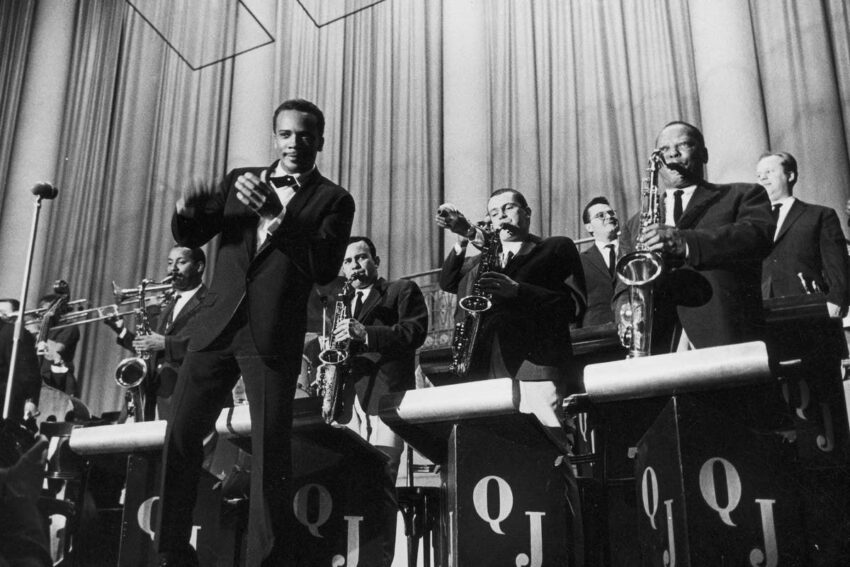
Quincy Jones and his big band in Europe in the 1950s. Jones moved to Paris in 1957, studied music theory with the renowned Nadia Boulanger, and put together a jazz orchestra that toured Europe and North America.
Here’s one from when I first remember him, in the 1950s, when he had his big band in Europe; he and I played checkers on the floor in my mother’s apartment in Paris and discussed cold light. Later we talked about Heisenberg, uncertainty — and music. Really, Q was amazing. Farewell, Big Bro Q.”
When ‘Q’ Called Ebony, ‘Our Conversations Were Bonkers’
By Adrienne Samuels Gibbs (pictured, below)
 Back in the day when I was the entertainment director for Ebony mag, my editor-in-chief Bryan Monroe yelled into the hallway: “Adrienne, it’s Quincy. I can’t talk to him. Grab the line.”
Back in the day when I was the entertainment director for Ebony mag, my editor-in-chief Bryan Monroe yelled into the hallway: “Adrienne, it’s Quincy. I can’t talk to him. Grab the line.”
So I ran to my desk and grabbed the line. Mr. Jones called fairly often — he had a LOT to say, tons of ideas, and so many stories that were so important. On this particular day we talked about growing up on the South Side of Chicago and the arts scene here from hanging with Howlin’ Wolf to chatting with Gwendolyn Brooks. I would keep quotes from Quincy to sprinkle into my other stories because he ALWAYS had an anecdote about any possible celebrity you could name.
He even told me about playing hide and go seek in Ebony with Michael Jackson and how the kids ran into my area and hid under the desk. He stopped calling Bryan and started calling me! We had phone dates.
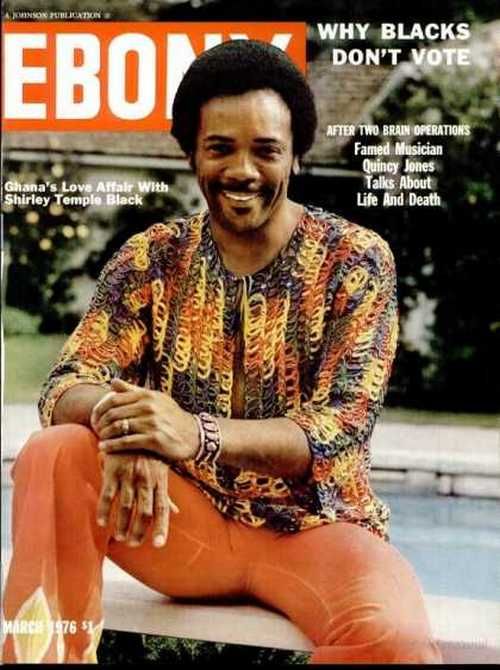 A true legend. A walking historian (even though he didn’t quite see it in that way). A culture creator. I’m so blessed to have even been in his presence for a few hours a month over a few years. (Photo: Ebony cover from March 1976)
A true legend. A walking historian (even though he didn’t quite see it in that way). A culture creator. I’m so blessed to have even been in his presence for a few hours a month over a few years. (Photo: Ebony cover from March 1976)
My time at Ebony largely preceded social media, so the images I have are on actual 35mm film and stacked in boxes in my attic. My tapes, recorded on an Olympus, are carefully arranged and preserved.
Everything he said sounded like a tall tale, but everything was true. Our conversations were bonkers.
Quincy knew my dad, who had long since passed away, and he even remembered stories of him! He talked of an artistic renaissance in Chicago that I would have loved to witness if I had been alive at the time. I had to console myself with books and documentaries and interviews.
Rest in peace to an American legend.
Adrienne Samuels Gibbs, most recently director of content for Medium, was Ebony senior editor, then managing editor, from 2009 to 2017.
Cuban Journalist Stranded in Peru, Seeks Asylum

An independent Cuban journalist and his family are seeking asylum in Peru after becoming stranded there after being pressured to leave Cuba but denied entry to Nicaragua, a would-be stopover in their plan to seek entry to the United States via Mexico, according to news reports Saturday and Sunday.
Independent journalist Enrique Díaz Rodríguez and his family have been left in “inhumane conditions and without access to adequate shelter at the airport,” according to the human rights group Cubalex. They are stranded at the Jorge Chávez International Airport in #Perú, “in a critical situation and of extreme vulnerability, after the refusal of the immigration authorities of #Nicaragua to allow them to enter that country.
“We warn about the serious situation faced by the journalist and his family, trapped in a migratory limbo with no possibility of safe return to #Cuba, where they face serious dangers due to threats from the regime in retaliation for their work as an independent journalist,” the group said. “We denounce the complicity between the governments of #Nicaragua and #Cuba, as well as the responsibility of airlines, in blocking the transit of human rights defenders, independent journalists and activists, putting their lives and those of their families at serious risk.”
Short Takes
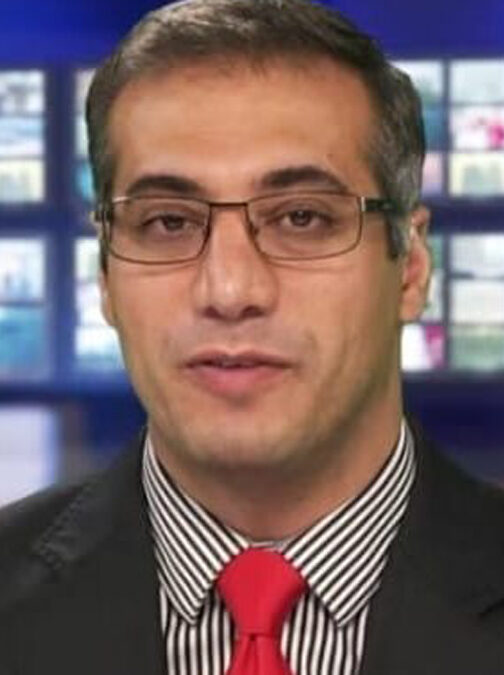 “An Iranian-American journalist who once worked for a U.S. government-funded broadcaster is believed to have been detained by Iran for months now, authorities said Sunday, further raising the stakes as Tehran threatens to retaliate over an Israeli attack on the country,” Jon Gambrell reported Sunday for the Associated Press. “The imprisonment of Reza Valizadeh (pictured) was confirmed to The Associated Press by the U.S. State Department as Iran marked the 45th anniversary of the takeover of the American Embassy and hostage crisis on Sunday. . . .”
“An Iranian-American journalist who once worked for a U.S. government-funded broadcaster is believed to have been detained by Iran for months now, authorities said Sunday, further raising the stakes as Tehran threatens to retaliate over an Israeli attack on the country,” Jon Gambrell reported Sunday for the Associated Press. “The imprisonment of Reza Valizadeh (pictured) was confirmed to The Associated Press by the U.S. State Department as Iran marked the 45th anniversary of the takeover of the American Embassy and hostage crisis on Sunday. . . .”
 “With no disrespect to nurses and fashion models and backbenchers or even shadow secretaries of state, being the first Black leader of one of the top three political parties in Britain wipes the floor with all of those achievements,” Dotun Adebayo wrote Friday for the Black British newspaper The Voice, commenting on the ascension of Kemi Badenoch (pictured) to leader of the Conservative Party. “For the simple reason that, if she has become the next Tory leader as you read this, you will have to accept that she is only an election away from being the most powerful person in the country. A Black woman. In our lifetime. Remarkable.” However, Adebayo wrote, “Kemi is clearly the antithesis of the great Black women that we have always considered to be ‘on our side’.”
“With no disrespect to nurses and fashion models and backbenchers or even shadow secretaries of state, being the first Black leader of one of the top three political parties in Britain wipes the floor with all of those achievements,” Dotun Adebayo wrote Friday for the Black British newspaper The Voice, commenting on the ascension of Kemi Badenoch (pictured) to leader of the Conservative Party. “For the simple reason that, if she has become the next Tory leader as you read this, you will have to accept that she is only an election away from being the most powerful person in the country. A Black woman. In our lifetime. Remarkable.” However, Adebayo wrote, “Kemi is clearly the antithesis of the great Black women that we have always considered to be ‘on our side’.”
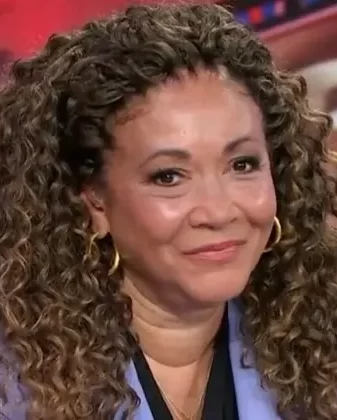 Michele Norris (pictured), who left The Washington Post as a contributing columnist last week after owner Jeff Bezos prevented the paper from endorsing a presidential candidate, is joining MSNBC as a senior contributing editor, the network announced Sunday.
Michele Norris (pictured), who left The Washington Post as a contributing columnist last week after owner Jeff Bezos prevented the paper from endorsing a presidential candidate, is joining MSNBC as a senior contributing editor, the network announced Sunday.
- It’s “worth noting . . . independent hyperlocal community newsrooms’ long-standing decision to stay neutral” about making political endorsements, Tracie Powell and Jean Marie Brown wrote Thursday for the Pivot Fund. “Unlike their larger counterparts, hyperlocal newsrooms are deeply embedded in their communities, prioritizing trust and connection in places where traditional news media often falls short. For these outlets, the decision not to endorse is more than just a policy; it’s a strategy to remain accessible and relevant to every corner of the communities they serve. . . .”
- “According to my hunting through dozens of newspaper opinion sections, here’s where we stand just before election day: 22 endorsed Kamala Harris; 2 endorsed Donald Trump; 71 endorsed no one,” Joshua Benton reported Monday for Nieman Lab. “That’s right: Three-quarters of the nation’s largest newspapers have declined to endorse anyone for president this cycle. . . .”
- Vice President Kamala Harris will spend election night at Howard University, “her alma mater, one of the pre-eminent historically Black colleges in America. That means the staff of the student newspaper, The Hilltop, and students of the Department of Media, Journalism and Film are fastidiously preparing to capture history as it unfolds on their own campus,” Curtis Bunn reported Thursday for NBC News.
- At Morgan State University, WEAA (weaa.org; 88.9 FM), the MSU Spokesman and BEAR-TV Tuesday evening plan to cover the election, including news updates from students and podcasts helmed by Profs. E. R. Shipp and Sheri Booker and Maryland Public Television’s Charles Robinson.
- Adds the National Association of Black Journalists: “Join NABJ Black News & Views tonight starting at 10 p.m. Eastern, 7 p.m. Pacific, for updates on the half hour as returns come in across the country. Our correspondents will bring reaction from elected officials, from watch parties, from Howard University, where Vice President Harris is expected to appear, and more. And to respond to the anxiety that this race has brought to many, we’ll have exercise specialist Ramon Felix, owner of Stretchergy.com, teach a few moves aimed at relaxing you. Join us on our homepage, www.BlackNewsAndViews.com, Facebook, YouTube, LinkedIn or Twitch.”
 Aki Soga (pictured), executive editor at the Burlington (Vt.) Free Press, announced his retirement Monday, “and I bring to a close a career in Vermont journalism that spanned just shy of 33 years – fully half of my life,” Soga told readers. “I came to the Free Press in 1991 after five years working as a reporter in Tokyo, first at an English-language newspaper, then as a correspondent for a financial news wire in the very early days of digital journalism. At the Free Press, I have been a reporter on the features and business desks, business editor, in charge of the opinion pages under various titles and, finally, editor. I’ve been able to build a fulfilling career in a single newsroom that has a deep connection to the people and communities we cover. That’s a rare privilege in our profession these days.”
Aki Soga (pictured), executive editor at the Burlington (Vt.) Free Press, announced his retirement Monday, “and I bring to a close a career in Vermont journalism that spanned just shy of 33 years – fully half of my life,” Soga told readers. “I came to the Free Press in 1991 after five years working as a reporter in Tokyo, first at an English-language newspaper, then as a correspondent for a financial news wire in the very early days of digital journalism. At the Free Press, I have been a reporter on the features and business desks, business editor, in charge of the opinion pages under various titles and, finally, editor. I’ve been able to build a fulfilling career in a single newsroom that has a deep connection to the people and communities we cover. That’s a rare privilege in our profession these days.”
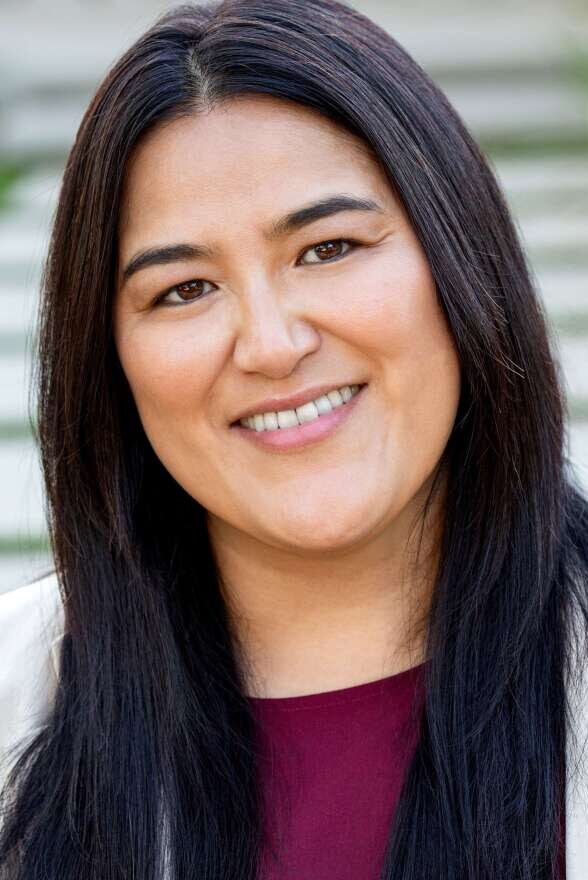 Ashley Alvarado (pictured) will be the organization’s next president and CEO of Texas Public Radio, its board of trustees announced Oct. 21. “Currently the vice president of community engagement and strategic initiatives at LAist (Southern California Public Radio), Alvarado will oversee day-to-day operations and lead TPR’s strategy, operations and programming across broadcast, streaming and digital platforms. She is scheduled to take the helm of the award-winning, non-profit media organization in December. . . .”
Ashley Alvarado (pictured) will be the organization’s next president and CEO of Texas Public Radio, its board of trustees announced Oct. 21. “Currently the vice president of community engagement and strategic initiatives at LAist (Southern California Public Radio), Alvarado will oversee day-to-day operations and lead TPR’s strategy, operations and programming across broadcast, streaming and digital platforms. She is scheduled to take the helm of the award-winning, non-profit media organization in December. . . .”
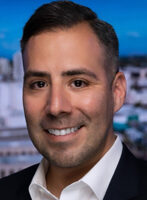 “Martin Ortiz (pictured) today was promoted to president and general manager of ABC O&O KFSN Fresno, Calif., succeeding Mike Carr who is now running ABC’s KTRK Houston,” Mark K. Miller reported Oct. 22 for TVNewsCheck. “Ortiz has been KFSN’s news director since 2020, overseeing coverage of several major stories, including the Creek Fire in 2020 and the historic 2023 winter storms that led to the reformation of the dormant Tulare Lake. . . .”
“Martin Ortiz (pictured) today was promoted to president and general manager of ABC O&O KFSN Fresno, Calif., succeeding Mike Carr who is now running ABC’s KTRK Houston,” Mark K. Miller reported Oct. 22 for TVNewsCheck. “Ortiz has been KFSN’s news director since 2020, overseeing coverage of several major stories, including the Creek Fire in 2020 and the historic 2023 winter storms that led to the reformation of the dormant Tulare Lake. . . .”
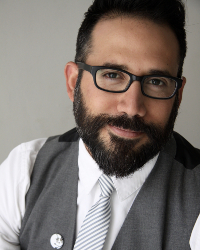 Robert Hernandez (pictured), professor of professional practice at University of Southern California and member of the National Association of Hispanic Journalists Hall of Fame, has become NAHJ’s program manager, “overseeing all training and programming at our annual conference, the Adelante Academy,” aimed to develop the next generation of news executives, and more, NAHJ announced Oct. 24. “Robert has made a name for himself as a journalist of the Web, not just on the Web,” NAHJ said. “His primary focus is exploring and developing the intersection of technology and journalism – to empower people, inform reporting and storytelling, engage community, improve distribution and, whenever possible, enhance revenue.”
Robert Hernandez (pictured), professor of professional practice at University of Southern California and member of the National Association of Hispanic Journalists Hall of Fame, has become NAHJ’s program manager, “overseeing all training and programming at our annual conference, the Adelante Academy,” aimed to develop the next generation of news executives, and more, NAHJ announced Oct. 24. “Robert has made a name for himself as a journalist of the Web, not just on the Web,” NAHJ said. “His primary focus is exploring and developing the intersection of technology and journalism – to empower people, inform reporting and storytelling, engage community, improve distribution and, whenever possible, enhance revenue.”
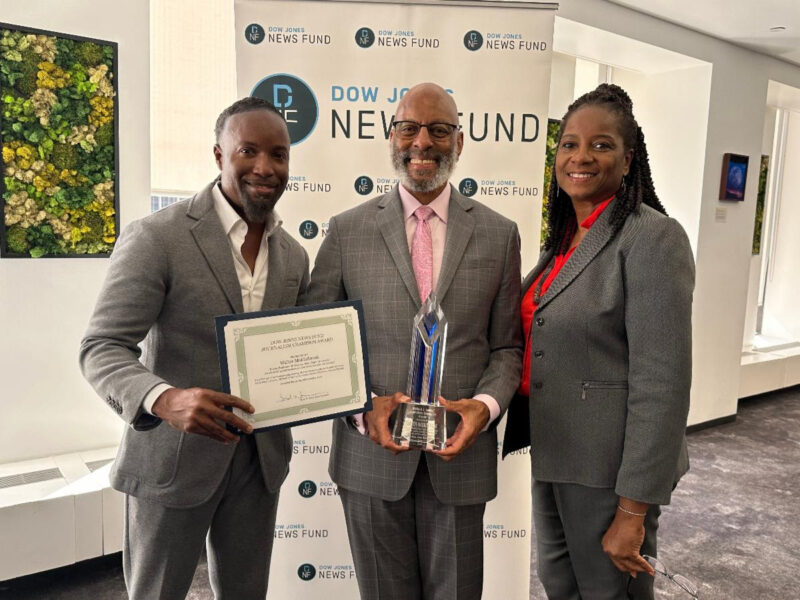
From left, Brent Jones, board president of the Dow Jones News Fund; Walter Middlebrook, professor of practice, Pennsylvania State University; and Shirley Carswell, the fund’s executive director. (Credit: Dow Jones News Fund)
- ” The Dow Jones News Fund named veteran journalist, recruiter and educator Walter Middlebrook as the recipient of the 2024 Richard J. Levine Journalism Champion Award on Friday,” the Fund announced Monday. “The Journalism Champion Award was established in 2022 to honor those whose work supports the perpetuation of a strong and diverse free press. . . . Middlebrook, the Foster Professor of Practice at Pennsylvania State University, is a former senior editor and newsroom manager whose four-decade career includes work at several major daily news organizations. . . .”
- A Colorado group “consisting of a handful of publishers of ethnically owned newspapers and newsmagazines, or those serving a largely ethnic or immigrant audience” has constituted itself as the Colorado Ethnic Media Exchange, Elaine Tassy reported Oct. 10 for Colorado Public Radio. “They meet Friday mornings to discuss ways to work together. Can they share ads? Collaborate as far as solving problems unique to their niche industry? That’s the goal, said Brittany Winkfield, president of the group.”
- “Urban One has entered a Local Management Agreement with La Mega Media, Inc. and Lazo Media LLC to expand Spanish-language radio programming in Cleveland, Columbus, Cincinnati, and Indianapolis under the La Mega brand,” Radio Ink reported Friday. “Outgoing Radio One CEO David Kantor noted, ‘This rebranding marks a significant enhancement to our Spanish-language media presence in Ohio and Indianapolis . . .’ “
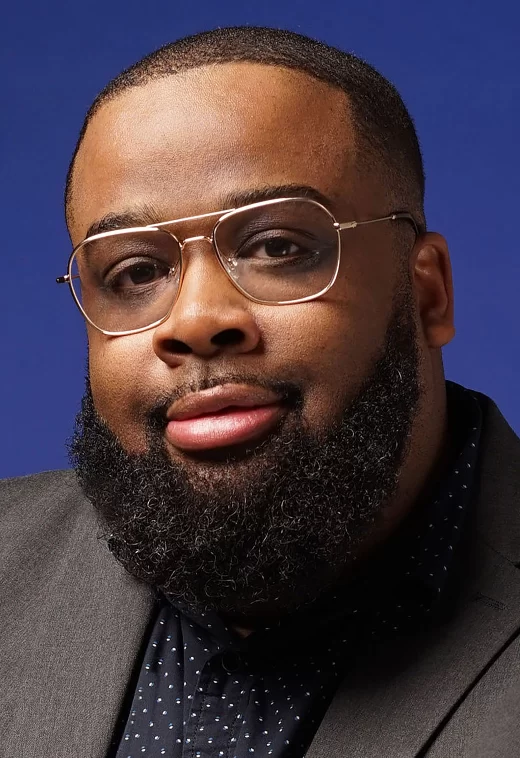 Mark S. Luckie (pictured) has joined the Captial B nonprofit news operation as director of audience and innovation, Captial B announced Thursday. “Luckie joins us from the NAACP Legal Defense Fund, where he was the director of digital strategy. He has led media partnerships for some of the most influential social platforms in the world, including Facebook, Twitter, and Reddit. Luckie has also led digital initiatives for The Washington Post, the Center for Investigative Reporting, The Los Angeles Times, and Entertainment Weekly.”
Mark S. Luckie (pictured) has joined the Captial B nonprofit news operation as director of audience and innovation, Captial B announced Thursday. “Luckie joins us from the NAACP Legal Defense Fund, where he was the director of digital strategy. He has led media partnerships for some of the most influential social platforms in the world, including Facebook, Twitter, and Reddit. Luckie has also led digital initiatives for The Washington Post, the Center for Investigative Reporting, The Los Angeles Times, and Entertainment Weekly.”
- Jason Rezaian, veteran Opinion columnist for The Washington Post who spent 544 days unjustly imprisoned by Iranian authorities, will become the Post’s Director of Press Freedom Initiatives, the Post announced Oct. 21. “Rezaian will strategically advance the next chapter of The Washington Post’s Press Freedom Partnership. From engaging with the global press freedom community across platforms – including the launch of a newsletter – to growing and deepening key relationships and opportunities, Rezaian will strengthen these initiatives, which are personal to both him and The Post.”
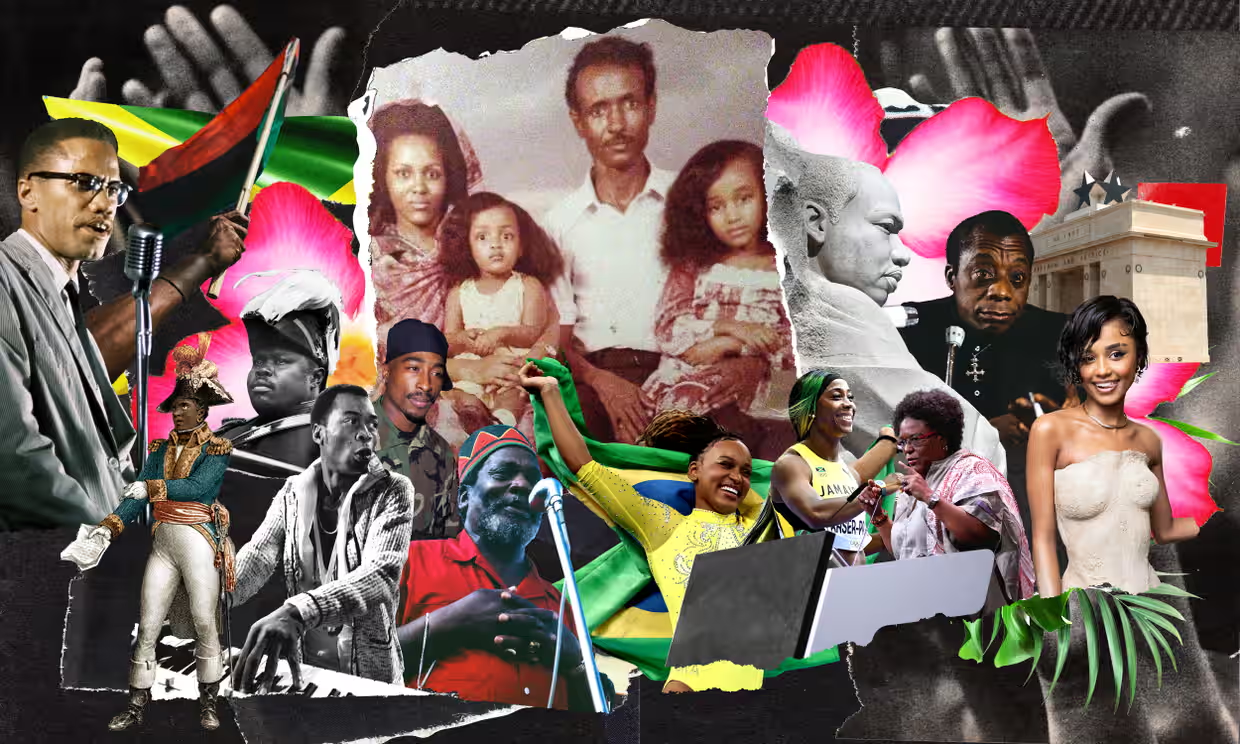
“From Europe to Africa and the Americas to the Caribbean, we will be exploring hot topics that are so often contained to the group chat,” the Guardian said. (Illustration: Dakarai Akil/The Guardian)
- “The Guardian has today launched The Long Wave: a new newsletter delivering a weekly dose of Black life and culture around the world, written by Nesrine Malik and edited and co-written by Jason Okundaye, the British publication announced Wednesday. “Every Wednesday, The Long Wave brings together a broad range of experiences, discussions and events relevant to the global Black diaspora. It will offer original reporting, features and commentary across arts, business, sport, politics, environment and more. The newsletter is a new space dedicated to exploring Black culture and conversations, both global and local, drawing on the journalism of the Guardian’s expanded network of correspondents in Africa, the US, the UK, South America, the Caribbean and elsewhere. . . .”
Journalists from Panama and Colombia specializing in migration are providing critical reporting on the Darien Gap, a dense jungle connecting Colombia and Panama that has become a deadly route for migrants seeking to reach the United States, Desiree Marquez reported Oct. 28 for LatAm Journalism Review. “The Indigenous communities have left many of their customs behind, and everything is driven by money,” said Grisel Bethancourt, a Panamanian investigative journalist.” Bethancourt is “Seeing how young people have abandoned farming and fishing for the modern clothing and electronic devices that now control their lives. . . . Drug trafficking and sex work thrive under the light of the moon, and local criminals control the economy, according to Bethancourt’s reporting. Migrants, exhausted and often robbed of everything, arrive in these towns looking for help, but face new struggles to survive.”
- “There is a global trend of governments accusing journalists and news organizations of financial crimes as a way to silence them, according to a report from UNESCO on the misuse of financial laws to pressure media outlets published on October 23,” Carolina de Assis reported Wednesday for LatAm Journalism Review. “Central America has the highest concentration of cases in Latin America and the Caribbean, the report says. Authors Edward Pittman and Elisa Juega analyzed over 120 cases worldwide between 2005 and 2024, and concluded that, as this is a relatively new and underreported phenomenon, the global number of cases during this period is likely higher. . . .”
- “Despite recent efforts by the State Duma, Russia’s lower house of parliament, to increase Russian media presence in Africa, the lack of opportunities for African media in Russia remains a stark reality,“ Kester Kenn Klomegah reported Oct. 22 for Inter-Press Service. “During a meeting aimed at enhancing Russia-Africa relations, State Duma Chairman Vyacheslav Volodin acknowledged the need for Russian media to have a stronger presence in Africa, even as he admitted that their reach is far behind that of the U.S., UK, and Germany. . . .”
- “When Moroccan authorities released three prominent journalists in July as part of a mass pardon marking King Mohamed VI’s 25 years on the throne, their friends and families celebrated,” the Committee to Protect Journalists said Oct. 21. “But the excitement was short-lived. Taoufik Bouachrine, Soulaiman Raissouni, and Omar Radi have been shamed in the media, stalked, and harassed since their release as they face the enduring stigma of their sex crimes convictions, which are widely believed to be in retaliation for their work. . . .”
- The high-stakes election season in Guinea-Bissau “brings with it logistical and ethical challenges for reporters,” Anabela Guedes and Alvaro Andrade reported Oct. 22 for the Voice of America. “Media organizations are preparing coverage proposals to present to international partners, particularly the United Nations Development Program (UNDP). These proposals often include requests for per diems to pay for transportation, food, lodging and communication for journalists. This practice has long been common in Guinea-Bissau, where media outlets lack the financial resources to independently cover elections. As a result, many will either accept or turn to political candidates or parties for travel support, creating a relationship that compromises journalistic independence. To maintain impartiality, media outlets are increasingly seeking support from international and regional organizations. . . .”

- The special adviser to Nigeria’s president is accusing the Guardian, one of Nigeria’s reputable newspapers, of sedition after the Guardian wrote a piece headlined “Calls for military Intervention: Misery, Harsh Policies Driving Nigerians to Desperate Choices,” Nigeria’s This Day reported Thursday. Written by Eno-Abasi Sunday, “the article attempted to present the country’s fouled socio-economic environment which has left many people confused about the present and unenthusiastic about tomorrow. No objective assessment is likely to place all the blame for this difficult climate on the incumbent administration of President Bola Tinubu. Neither can the excruciating impact of its handling of this dire situation be successfully denied.”
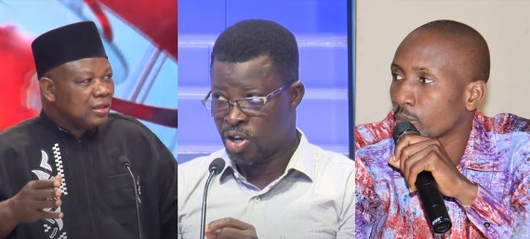 The Committee to Protect Journalists said Oct. 25 it was “alarmed by the forced conscription” of Burkina Faso “journalists Serge Atiana Oulon [right], Adama Bayala [center], and Kalifara Séré [left], who went missing in June, and calls for them to be immediately returned home. ‘It is outrageous and chilling that Burkinabe authorities feel it is acceptable to take journalists from their homes and offices without warning and wait four months before saying publicly that they have been forced into military service,’ said Angela Quintal, CPJ’s Africa program head. ‘The repeated conscription of journalists appears to be just one, aggressive tactic in a wave of censorship deployed across Burkina Faso’s media landscape.’ . . .”
The Committee to Protect Journalists said Oct. 25 it was “alarmed by the forced conscription” of Burkina Faso “journalists Serge Atiana Oulon [right], Adama Bayala [center], and Kalifara Séré [left], who went missing in June, and calls for them to be immediately returned home. ‘It is outrageous and chilling that Burkinabe authorities feel it is acceptable to take journalists from their homes and offices without warning and wait four months before saying publicly that they have been forced into military service,’ said Angela Quintal, CPJ’s Africa program head. ‘The repeated conscription of journalists appears to be just one, aggressive tactic in a wave of censorship deployed across Burkina Faso’s media landscape.’ . . .”
Vibe Magazine Was Quincy Jones’ Print Legacy
Nov. 4, 2024
Music Impresario Went to Time Warner With His Idea
How Harris Coverage Differs in Black Media:
Boston Globe Finds a Context Missing Elsewhere
Trump Attacked Media 100 Times in 8 Weeks
Star-Ledger, Other N.J. Papers Ending Print Editions
Haiti, Israel Worst on Justice for Journalists’ Killers
Survey Finds Racial Differences on Foreign Policy
AP Documents Sexual Abuse of Female Inmates
$3 Million to Boost Student Papers in Big Apple
$7.5 Million Pledged to Support Nonprofit News
Must Broadcasters Imagine the Audience is White?
Miami Radio Legend Jill Tracey Dies at 60
More to come
Homepage photo: Quincy Jones at home, in a promotional photograph for his 1989 album, “Back in the Block,” with Vibe magazine at right.
Support Journal-ismsDonations are tax-deductible.
In 2010, Quincy Jones reflects on the creation of Vibe. “When I open up this 10th anniversary issue and I open that thing up and I saw 100 covers on there I mean it really . . . lights you up, and again it gives you that courage to take a giant step the next time, so after a while you get to become fearless.” (Credit: YouTube)
Music Impresario Went to Time Warner With His Idea
Quincy Jones, described as “one of the most powerful forces in American popular music for more than half a century” and who died at 91 Sunday in California, also left a legacy in the journalism world: Jones’s marriage of music and publishing led to the creation of Vibe magazine.
Vibe was founded in 1992 by Jones and Time Warner, with a focus on hip-hop and R&B music and the culture surrounding it. It became one of the most influential publications of its kind, as the New York Times would report when the title was sold in 2013.
“Presenting a glossy and urbane view of urban culture, Vibe Magazine became a preeminent site for journalists and scholars chronicling contemporary black popular culture,” author, professor and cultural critic Mark Anthony Neal wrote in 2009, when the magazine folded, later to return as an online-only product.
“The lists of writers who can claim a Vibe Magazine by-line represent the cutting edge of a critical intelligentsia, many of them black writers who would have had few other legitimate options to hone their craft.”
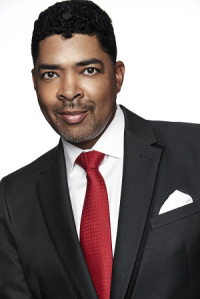 In a 2018 oral history of the magazine for Billboard, Keith Clinkscales (pictured), chief operating officer in 1993, and chief executive officer from 1994 to 1999, said, “No conversation about Vibe can occur without talking about Quincy Jones. It was his career, and the way he did things, that set the stage for belief that Vibe could happen. Here’s one other thing: Nobody recognizes how hard it is for people of color to get an opportunity. The position I had at Vibe was a gift from God, and Quincy, and Bob Miller” of Time Inc. “It was one of the greatest opportunities that I’ve ever gotten.”
In a 2018 oral history of the magazine for Billboard, Keith Clinkscales (pictured), chief operating officer in 1993, and chief executive officer from 1994 to 1999, said, “No conversation about Vibe can occur without talking about Quincy Jones. It was his career, and the way he did things, that set the stage for belief that Vibe could happen. Here’s one other thing: Nobody recognizes how hard it is for people of color to get an opportunity. The position I had at Vibe was a gift from God, and Quincy, and Bob Miller” of Time Inc. “It was one of the greatest opportunities that I’ve ever gotten.”
The late journalistic icon David Carr summarized Vibe’s influence in 2009 for The New York Times, when the magazine shut down:
“Founded with a test issue in 1992 by Time Warner and commencing regular issues in 1993, Vibe was a magazine about hip-hop, R&B and urban youth culture that brought luxe design values and major-league photography and writing to the music that dominated and shaped American pop culture in the late 1990s.
“In the current context — a black president, rap stars so ubiquitous even your mom knows who 50 Cent is, pop songs that feature drive-bys from the M.C.’s of the moment — Vibe would seem less necessary.
“But it’s worth remembering what an easy target rap was in the culture wars of the early ’90s; Vibe did not sanitize rap so much as give it its cultural due. If there were no Vibe, contemporary black music and culture would not be quite so writ into the mainstream.
“Sixteen years ago black pop musicians may have been moving records and booties, but few got the A-list treatment in major magazines, at least not until Vibe. Those artists usually had to be huge to earn the cover at other publications, but Vibe took an interest in both the nascent and the known.
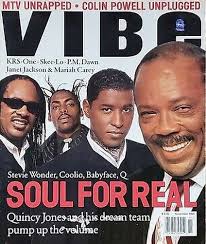 “Born from a friendship between Mr. Jones and Steven J. Ross, then chairman of Time Warner, Vibe showed up on a magazine rack where black faces rarely appeared unless they had been charged with a crime or it was a thin August issue and a fashion magazine wanted to demonstrate some token diversity. (Yes, Ebony and Jet got there first, but they were mostly Mom and Dad’s magazines; the Source was founded in the late 1980s but had little for readers who weren’t hard-core hip-hop heads.) (Photo: Jones makes the cover!)
“Born from a friendship between Mr. Jones and Steven J. Ross, then chairman of Time Warner, Vibe showed up on a magazine rack where black faces rarely appeared unless they had been charged with a crime or it was a thin August issue and a fashion magazine wanted to demonstrate some token diversity. (Yes, Ebony and Jet got there first, but they were mostly Mom and Dad’s magazines; the Source was founded in the late 1980s but had little for readers who weren’t hard-core hip-hop heads.) (Photo: Jones makes the cover!)
 “Every time I see a black entertainment figure on the cover of InStyle or Cigar Aficionado, I think of Vibe,” said Danyel Smith (pictured), Vibe’s editor in chief, who interned at the magazine and served two stints as its editor. “You have to remember that the kind of coverage you see now did not exist before Vibe. You had this music community that was
“Every time I see a black entertainment figure on the cover of InStyle or Cigar Aficionado, I think of Vibe,” said Danyel Smith (pictured), Vibe’s editor in chief, who interned at the magazine and served two stints as its editor. “You have to remember that the kind of coverage you see now did not exist before Vibe. You had this music community that was
incredibly bold and vibrant, and it was getting, at best, a sometime look in most places.”
“Black people read it, and so did white people and, well, anybody who listened to hip-hop and R&B, a psychographic that came to include vast swaths of Americans. By the mid-’90s it became a showcase for hip-hop royals, and the writer Kevin Powell and others steadily chronicled the East Coast-West Coast rap feud and the rise and deaths of Tupac Shakur and the Notorious B.I.G.
“ ‘I think that the magazine defined a cultural moment during the whole East Coast-West Coast beef,’ said Ta-Nehisi Coates, a blogger and writer for The Atlantic. ‘The writers and editors at Vibe were participants in the hip-hop community who went to the same shows and the same parties as the people they covered. . . .’ “
- Paul de Barros, Seattle Times: What Seattle meant to Quincy Jones, and what he meant to the city
- Jessica Bennett, Vibe.com: Quincy Jones, Iconic Music Producer, VIBE Founder, Dies At 91
How Harris Coverage Differs in Black Media
Vice President Kamala Harris in July at the Essence Festival of Culture in New Orleans. Essence magazine CEO and president Caroline Wanga conducted a “chief-to-chief” interview with Harris. (Credit: Roland Martin/YouTube)
Boston Globe Finds a Context Missing Elsewhere
” ‘We know that this is monumental’: How Black-led newsrooms are bringing nuance, perspective to Kamala Harris coverage,” read the headline Thursday over a Boston Globe story by its media writer, Aidan Ryan (pictured below).
 The story quoted editors at the nonprofit news website Capital B, the director of City University of New York’s Black Media Initiative, and leaders at Boston’s Bay State Banner, Essence magazine and the New York Amsterdam News.
The story quoted editors at the nonprofit news website Capital B, the director of City University of New York’s Black Media Initiative, and leaders at Boston’s Bay State Banner, Essence magazine and the New York Amsterdam News.
It came a month after journalists of color observed that mainstream media were not “getting” Harris.
“News coverage of Vice President Kamala Harris and her bid for the presidency is hampered by the ‘cultural incompetence’ of journalists who don’t understand or acknowledge the political skill it took for a Black and South Asian woman to reach the level she has, according to reporters who discussed the Democratic presidential nominee last week at the Journal-isms Roundtable,” this column reported.
“Overall, the press has failed to pay sufficient attention to her background, her time as vice president and how the priorities she’s outlined reflect her own experience as a woman, a former prosecutor and a person of color, said the reporters, themselves of color and who have all covered Harris.”
 Ryan said the idea for his story sprung from a conversation with Cristina Silva (pictured), the Globe’s managing editor for local news, who has been co-chair of the Diversity Committee of the recently disbanded News Leaders Association and, as a member of the National Association of Hispanic Journalists, told that organization in 2021, “it’s long overdue for NAHJ to do more to fight anti-Black racism and stand with NABJ,” the National Association of Black Journalists. NAHJ formed a task force on Afro-Latinos.
Ryan said the idea for his story sprung from a conversation with Cristina Silva (pictured), the Globe’s managing editor for local news, who has been co-chair of the Diversity Committee of the recently disbanded News Leaders Association and, as a member of the National Association of Hispanic Journalists, told that organization in 2021, “it’s long overdue for NAHJ to do more to fight anti-Black racism and stand with NABJ,” the National Association of Black Journalists. NAHJ formed a task force on Afro-Latinos.
Earlier, as national enterprise editor at USA Today, Silva launched “Hecho en USA,” a series intended to “tell stories about the lives of Spanish-speaking Americans,” published in English and Spanish.
“My editors and I have been discussing election coverage for several weeks,” Ryan messaged. Silva “had the idea to do a story about how Black-led news outlets were covering the election. After speaking with some editors of both local and national publications and reading their coverage, I decided to focus the piece largely on how various Black-led newsrooms were covering the Kamala Harris campaign, both in capturing the history she could make as the first Black woman to become president and the stakes of this election.
“What came through in my conversations and in several newsrooms’ coverage was a unique perspective on her identity, how she would govern if elected, and bringing nuance and context to threads that have been covered extensively by the mainstream press, such as Harris’s support among Black men. We hadn’t seen this story covered, so thought it was important to share with our readers and beyond.”
Ryan’s story began, “The day former president Donald Trump falsely claimed that Kamala Harris ‘happened to turn Black’ at a Black journalists’ convention in July, the nonprofit news website Capital B quickly published a story debunking the allegation.
“While the outlet called out the lie — its headline: ‘Donald Trump’s Pants on Fire Claim That Kamala Harris “Became” Black’ — Capital B didn’t dwell on the vice president’s race. Instead, executive editor Kelly Virella said the publication has focused on the issues most crucial to Black voters, such as Harris’s record on criminal justice reform, reproductive rights, and the economy, including how her policy proposals could boost Black communities.”
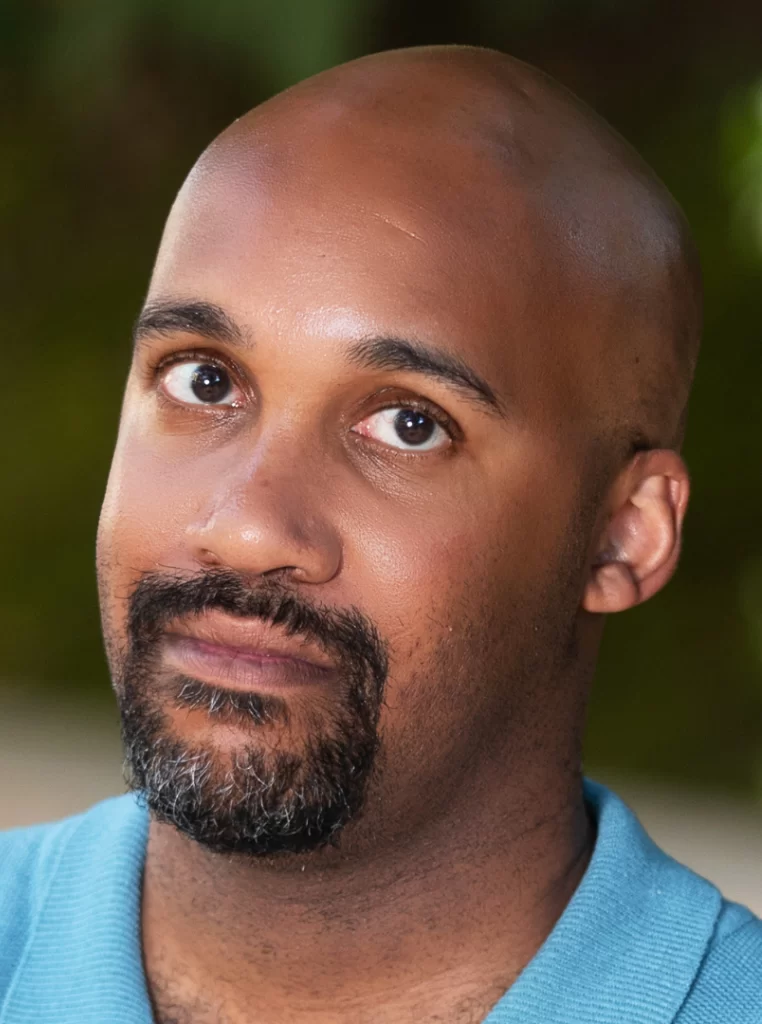 Later in the story, Ryan wrote, “Aaron Foley (pictured), news editor at the New York Amsterdam News — one of the country’s oldest Black newspapers — said Black news outlets have the imperative to avoid over-generalizations and frame statistics within proper context. That includes not running headlines that overstate the recent polling, he said, such as, hypothetically, ‘Black men are skeptical about having a Black woman in office.’
Later in the story, Ryan wrote, “Aaron Foley (pictured), news editor at the New York Amsterdam News — one of the country’s oldest Black newspapers — said Black news outlets have the imperative to avoid over-generalizations and frame statistics within proper context. That includes not running headlines that overstate the recent polling, he said, such as, hypothetically, ‘Black men are skeptical about having a Black woman in office.’
“ ‘That would be taken and run with this saying, “Oh, here’s a Black paper saying all Black men are doing it,” ‘ Foley said.
“Many Black outlets instead have run articles reframing the conversation, such as Capital B’s story: ‘What Headlines Miss About Black Men’s Support for Harris,’ which acknowledges the drop in polling, but emphasizes that Black men are poised to be the second-most-supportive voting bloc for Harris after Black women. . . .”
Silva told Journal-isms she had nothing to add to Ryan’s comments, but that “I am glad Aidan was able to write this important story on this historic coverage.”
CNN’s Kaitlan Collins (Chloe Fineman) checks in with Kamala Harris (Maya Rudolph) and Donald Trump’s (James Austin Johnson) campaigns on the eve of the 2024 election. Kamala Harris’s surprise appearance on NBC’s “Saturday Night Live” over the weekend was “a ‘clear and blatant effor’t to evade the FCC’s Equal Time rule,” Republican commissioner Brendan Carr asserted in a social media post. However, Alex Weprin reported Sunday for the Hollywood Reporter, “NBC is giving former President Donald Trump’s campaign free commercial time in response to Vice President Kamala Harris’ appearance on Saturday Night Live, including an unusual ad during Sunday’s NASCAR coverage, a source familiar with the matter says.” (Credit: YouTube)
Trump Attacked Media 100 Times in 8 Weeks
“As the U.S. presidential campaign reaches its November 5 climax, Republican candidate and former president Donald Trump has escalated his war on the free press, verbally attacking the media more than 100 times over the past two months,” Clayton Weimers, executive director of Reporters Without Borders USA, reported Oct. 25. “Yet these attacks rarely make the news anymore. Reporters Without Borders (RSF) is deeply concerned that American media – and in turn, the wider public – may be growing numb to the existential threat Trump’s attacks pose to American press freedom.
“In an eight-week long period analyzed by RSF, Trump insulted, attacked, or threatened the media at least 108 times in public speeches or remarks from September 1 to October 24. This figure does not include social media posts or remarks from others connected to the campaign. . . .”
On Sunday, Trump “delivered a profane and conspiracy-laden speech . . . talking about reporters being shot and suggesting he ‘shouldn’t have left’ the White House after his 2020 loss to Democrat Joe Biden,” Jill Colvin and Jonathan J. Cooper reported for the Associated Press.
In remarks “that bore little resemblance to the speech he’s been delivering at his recent rallies, the former president repeatedly cast doubt on the integrity of the vote and resurrected old grievances after trying to overturn his 2020 election defeat. Trump intensified his verbal attacks on what he cast as a ‘demonic’ Democratic Party and the American media, steering his rally in Lancaster, Pennsylvania, at one point to the topic of violence against members of the press.
“He noted the ballistic glass that is used to protect him at outdoor events after a gunman’s assassination attempt in July and pointed to openings between the panels.
“ ‘I have this piece of glass here,’ he said. ‘But all we have really over here is the fake news. And to get me, somebody would have to shoot through the fake news. And I don’t mind that so much.’
“Facing criticism for suggesting violence against the media, Trump’s campaign later played down his comments.
“ ‘The President’s statement about protective glass placement has nothing to do with the Media being harmed, or anything else,’ Trump campaign spokesperson Steven Cheung said in a statement. Instead he claimed that Trump was suggesting that reporters were in ‘great danger themselves, and should have had a glass protective shield, also. There can be no other interpretation of what was said. He was actually looking out for their welfare, far more than his own!’ ”
Separately, Beth Reinhard and Sarah Ellison reported Friday for The Washington Post, “When President Donald Trump threatened in 2017 to pull licenses from television stations that scrutinized his administration, he met resistance from his own political appointee — the Republican chairman of the Federal Communications Commission, who cited the First Amendment in objecting to the idea.
“Seven years later, Trump’s latest broadsides against the media are getting a much different reception.
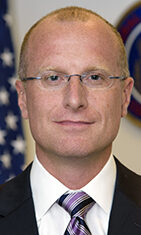 “As the former president and his allies demanded crackdowns on ABC over alleged bias in the presidential debate the network hosted and on CBS over its editing of an interview with his Democratic opponent, the agency’s two Republican commissioners, both originally nominated by Trump, appeared sympathetic.
“As the former president and his allies demanded crackdowns on ABC over alleged bias in the presidential debate the network hosted and on CBS over its editing of an interview with his Democratic opponent, the agency’s two Republican commissioners, both originally nominated by Trump, appeared sympathetic.
 “Not frivolous,” one of them, Brendan Carr, (pictured, above) said of the complaint about CBS during a Fox Business interview. ‘Big if true. Will look into it,’ said the other, Nathan Simington (pictured}, in a social media post the former president shared with millions of followers.
“Not frivolous,” one of them, Brendan Carr, (pictured, above) said of the complaint about CBS during a Fox Business interview. ‘Big if true. Will look into it,’ said the other, Nathan Simington (pictured}, in a social media post the former president shared with millions of followers.
“The shift suggests how a reelected Trump could install a more cooperative bureaucracy to weaponize the FCC as part of his broader assault against the media, including taking the extraordinary step of punishing broadcasters that air unfavorable coverage. . . .”
- Zeeshan Aleem, MSNBC: The Republican freakout over Biden’s ‘garbage’ gaffe is absurd
- Noah Bierman, Los Angeles Times: Harris leads by a wide margin among Latinos, signaling a rebound in support for Democrats, poll shows
- Michelle Boorstein, Washington Post: Harris is leaning on the Black church for votes. Can it still deliver?
- Jamelle Bouie, New York Times: Donald Trump Is Done With Checks and Balances
- Jamelle Bouie, New York Times: Will Democracy Ever Not Be on the Ballot?
- Hayes Brown, MSNBC: Kamala Harris’ fundamentals are strong
- Walt Carr, Washington Post: Black men’s decision (letter to the editor)
- Jarvis DeBerry, MSNBC: You can’t believe Donald Trump will ‘Make America Healthy Again’
- Gene Demby, B.A. Parker, Xavier Lopez, Courtney Stein, Alison MacAdam, Jess Kung, Christina Cala, Leah Donnella, Jasmine Romero, “Code Switch,” NPR: Diving into the Black Manosphere
- Xochitl Gonzalez, the Atlantic: Trump Pays the Price for Insulting Puerto Rico
- LZ Granderson, Los Angeles Times: Trump’s Madison Square Garden lineup tells you everything you need to know
- LZ Granderson, Los Angeles Times: Trump would gut Social Security and Medicare just as boomers need them
- Madison Gray, LinkedIn: The One Million Reasons We Cannot Afford to Bring Donald Trump Back
- Emil Guillermo, AsAmNews: Emil Guillermo’s enemy & to do lists
- Maggie Haberman, Jonathan Swan and Michael Gold, New York Times: Trump Team Fears Damage From Racist Rally Remarks
- Haitian Times: Russian-linked video falsely claims Haitian voter fraud in Georgia, fueling election disinformation
- Haitian Times: The Biden report card for Haitian American voters
- Eric Hananoki, Media Matters for America: “Go back”: How Trump’s media allies have dismissed or denigrated “third world country” Puerto Rico
- Nikole Hannah-Jones, New York Times: How Will White Women Vote? It’s a Question With a Fraught History.
- Meredith Lee Hill, Mia McCarthy and Holly Otterbein, Politico: Trump’s Puerto Rico fallout is ‘spreading like wildfire’ in Pennsylvania
- Indigenous Journalists Association: IJA ‘Reporting on the Native Vote’ virtual roundtable recording available on YouTube (video)
- Derrick Z. Jackson, the Root: Forget Black Men, Why This is Really The Moment of Truth for White Women Voters
- Derrick Z. Jackson, Union of Concerned Scientists: Uneasy Election Enthusiasm in Philadelphia
- Roy S. Johnson, al.com: Crazy as things are, don’t let this election scare you
- Colbert I. King, Washington Post: Kamala Harris has met the moment
- Alyson Klein, Education Week: Most Teens Believe Conspiracy Theories, See News as Biased. What Can Schools Do? (Oct. 21)
- Michael Luciano, Mediaite: Trump Boasts He Has ‘Beautiful White Skin’ Right After Slamming Kamala Harris
- Steven Lee Myers and Stuart A. Thompson, New York Times: Disinformation Watchdogs Are Under Pressure. This Group Refuses to Stop.
- Aleisha Robinson, Azia Ross, Dierre Hartman, Ja’Caiya Y. Stephens and Marcus Bland, Open Campus, Capital B: Harris and Trump Want Young Black Votes. Here’s What HBCU Students Want in a President
- Eugene Robinson, Washington Post: These two moments show what’s really on the ballot
- Reporters Without Borders: USA: RSF report shows press freedom shortcomings in key swing states ahead of 2024 election
- Kimberly Atkins Stohr, Boston Globe: Harris’s righteous frustration with the media
- L. Michelle Smith, HuffPost Black Voices: The Very Specific Reason Kamala Harris Will Never Be Good Enough For Some People
- Alexander Stockton, New York Times: If You Think Biden and Harris Were Weak on the Border, Think Again (video)
- Will Sutton, nola.com: The last day of early voting in Louisiana. Make your voice heard. For Willie.
- Jesse Washington, Andscape: In Pennsylvania, hip-hop could swing the election
- Tessa Weinberg, WBEZ/Chicago Sun-Times: Illinois officials battle misinformation to protect integrity of November election
- Juan Williams, The Hill: Election 2024 is all about sex
- Tiana Woodard, Boston Globe: Question 5 has put tipping culture in the spotlight. But few know its history is linked to slavery.
- Masrat Zahra, Columbia Journalism Review: Dearborn Diaries
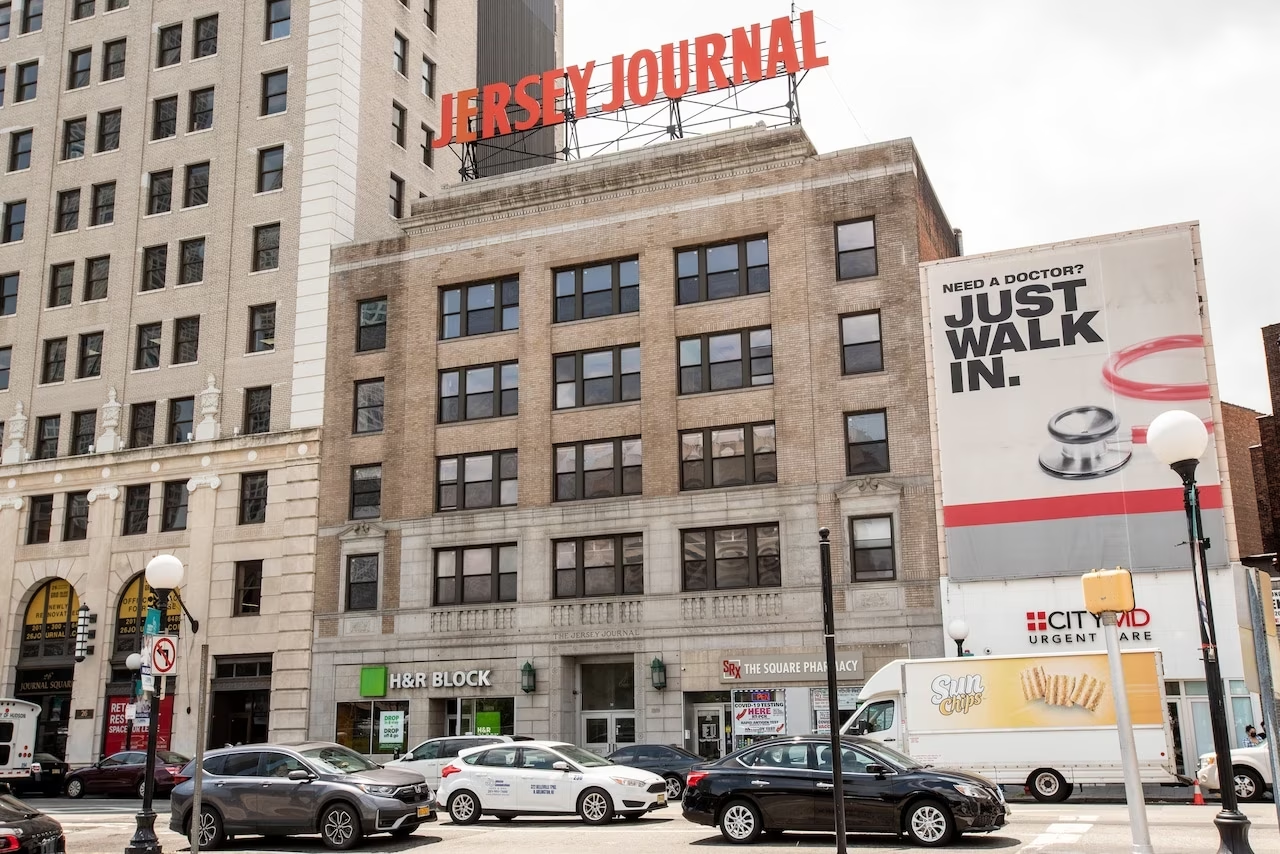
The building at 30 Journal Square in Jersey City, N.J., was for decades the home base for the Jersey Journal. (Credit: Reena Rose Sibayan/Jersey Journal)
Star-Ledger, Other N.J. Papers Ending Print Editions
The Star-Ledger, New Jersey’s largest newspaper and the winner of several Pulitzer Prizes, will stop publishing its print edition early next year, ending a lengthy run as a dominant source of print news in the region, its owners announced on Wednesday,” Lola Fadulu and Tracey Tully reported for The New York Times.
“The shuttering of The Star-Ledger’s printing plant will cause its sister publication, The Jersey Journal, a Jersey City-based newspaper with a storied, 157-year history, to cease publication altogether. Its demise will leave Hudson County, N.J., a densely populated region that is as well known for political corruption as it is for being the birthplace of Frank Sinatra, without a daily newspaper.”
Almost all of the reporters and editors are based out of newsrooms for NJ.com or LehighValleyLive.com (Pa.), news sites run by NJ Advance Media, the largest producer of news in New Jersey. All the publications and news companies are affiliates of Advance Publication, the largest privately held media company in the nation.
Most news stories are published online first, then published in the Advance newspapers, including The Star-Ledger, South Jersey Times, the Times of Trenton, the Jersey Journal, the Easton-Express Times (Pa.), and the Hunterdon County Democrat. The Star-Ledger will continue to have a separate online news site for subscribers after the print publication ends in February.
Only three journalists remain on The Star-Ledger’s staff — all members of the newspaper’s editorial board. David Blomquist, the Jersey Journal’s publisher and editor, said their eight full-time and nine part-time employees will be “let go” in February.
“Advance Local, which owns NJ Advance Media and NJ.com, home to the publications’ news sites, said they would remain available online,” the New York Times story continued.
“The Star-Ledger stopped publishing its Saturday newspaper in January, and its circulation has dropped 21 percent so far this year, its leaders said in a statement.
“Steve Alessi, the president of NJ Advance Media, said that people in New Jersey and across the country had ‘made clear their preference for news delivered in digital forms.’ He said leaders had tried to keep the print editions going but that declining demand and rising costs had made them ‘unsustainable.’
“All 17 employees of The Journal — including nine who work full time — will be let go and offered severance packages, David Blomquist, The Jersey Journal’s editor and publisher, told NJ.com.
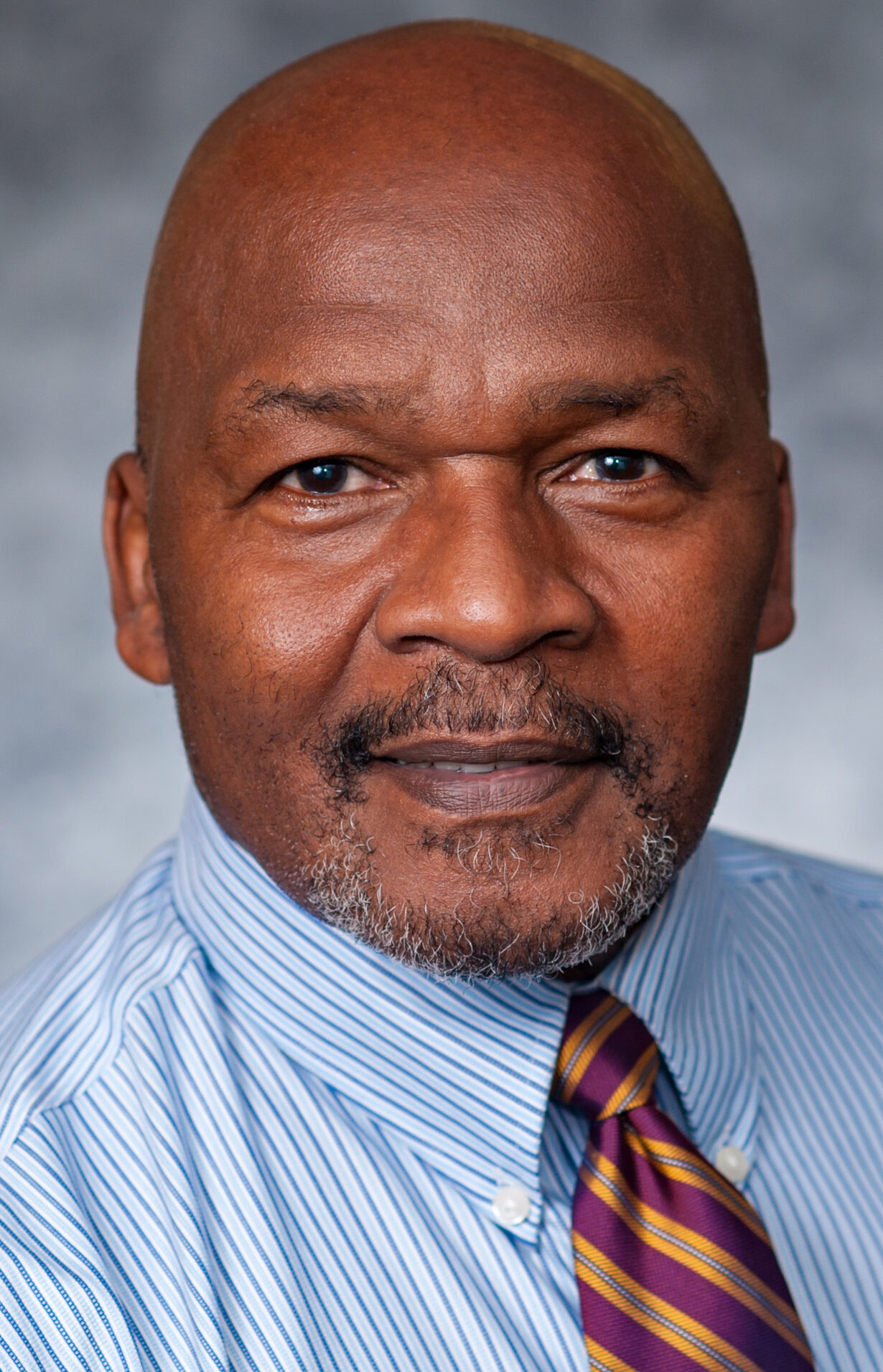 Hired in 1975, John C. Watson (pictured), Ph.D., associate professor of communications and journalism ethics at American University, was the first Black reporter at the Jersey Journal.
Hired in 1975, John C. Watson (pictured), Ph.D., associate professor of communications and journalism ethics at American University, was the first Black reporter at the Jersey Journal.
Watson recalled some of those of color who worked with him before moving on:
“There’s Leonard Greene — columnist at NY Daily News, reporter at New York Post, reporter at Boston Herald and Newsday; Gilbert Martinez — senior lecturer in journalism at Texas State University; Monica Quintanilla Araya – editor at Newsday;
“The late Earl Morgan (former minister of Information for Black Panther Party unit in New Jersey, reporter at Hudson Dispatch, reporter and columnist at The Jersey Journal, public library was named in his honor after death; Peralte Paul – Communications director at Georgia Tech, reporter at Atlanta Journal Constitution;
“Nick Chiles — writer in residence at University of Georgia Grady College of Journalism and Communication, Dallas Morning News, the Star-Ledger of New Jersey and New York Newsday, where he won a Pulitzer Prize as part of a team of reporters covering a subway crash, wrote books with Bobby Brown, Al Sharpton, Kirk Franklin and NBA center Etan Thomas. I was there from 1975 until I left for graduate school in 1996. I was the first Black reporter, later first Black editor (news editor then city editor) and first Black president of the Newspaper Guild unit in Jersey City.””
Watson later added two Puerto Rican journalists, the first Agustin Torres. “He pre-dated me by about a year and was the first reporter of color at the paper and the first elevated to an editor’s desk. He remained there when I left and stepped down in 2018. There was also Raul Vicente Jr., who was a decorated Viet Nam veteran and who worked the police beat for a while. He is currently in the entertainment business. I don’t know if it matters, but Péralte Paul is of Haitian descent and Monica Quintanilla is of Chilean descent.
”A New York Times article in 1999 said it was the most diverse newsroom in the NYC market. The numbers closely mirrored the population in our circulation area:
- Jersey Journal: After 157 years of keeping Hudson County informed, The Jersey Journal to close in 2025
- Helene Stapinski, Columbia Journalism Review: Requiem for the Jersey Journal
UNESCO prepared this video on “How to stop impunity for crimes against journalists?” in 2021. This year, the International Day to End Impunity for Crimes against Journalists fell on Nov. 2, with the global commemoration on Nov. 6 and 7 at the African Union Headquarters in Addis Ababa, Ethiopia. The theme is “Safety of Journalists in Crises and Emergencies.” (Credit: YouTube)
Haiti, Israel Worst on Justice for Journalists’ Killers
“Two small nations – Haiti and Israel – are now the world’s biggest offenders in letting journalists’ murderers go unpunished, according to CPJ’s 2024 Global Impunity Index, which measures unsolved murders in proportion to a country’s population. This year is the first time Israel has appeared in CPJ’s index since its inception in 2008,” the Committee to Protect Journalists reported Wednesday.
“In Haiti, ranked No. 1, a weak-to-nonexistent judiciary, gang violence, poverty, and political instability have contributed to the failure to hold killers to account. Haiti joined the index for the first time in 2023, in third place, as criminal gangs took over large parts of the country following the 2021 assassination of President Jovenel Moïse, plunging the press into an ‘existential crisis’ that has forced many to cut staff or close altogether.
“Israel’s targeted killing of journalists in Gaza and Lebanon during a relentless war drove it up to the No. 2 spot on this year’s index, which covers the period from September 1, 2014, to August 31, 2024. CPJ has documented the murder of five journalists – four Palestinian and one Lebanese – since the war began, and is investigating the possible targeted murders of 10 more journalists. Given the challenges of documenting the war, the number may be far higher. Overall, Israel has killed a record number of Palestinian journalists since the war began on October 7, 2023. . . .”
- International Federation of Journalists: Impunity: Governments must be held accountable for targeting journalists, says IFJ
- César López Linares, LatAm Journalism Review: From the newsroom to the stage: Mexican journalists tell their stories of resilience through performing arts
- Athena Stavrou, Independent, U.K.: More than 100 BBC staff accuse broadcaster of Israel bias in Gaza coverage
Survey Finds Racial Differences on Foreign Policy
A survey from the Carnegie Endowment for International Peace shows differences among registered Black, Hispanic and white voters on such critical foreign policy challenges as Israel and Palestine, immigration and reducing carbon emissions, the Center’s Christopher Shell reported.
“Here are some key findings:
- “On immigration, a slim majority of Americans agreed that undocumented immigrants should be allowed to remain in the country if certain conditions are met, though specific criteria were not assessed in the survey. Among supporters of former president Donald Trump, Hispanic Americans were least supportive (37 percent) of measures aimed at removing undocumented immigrants compared to Black Trump supporters (51 percent) and White Trump supporters (77 percent).
- “While a plurality of Americans (43 percent) strongly supported U.S. involvement in international efforts to reduce carbon emissions, few supported completely phasing out fossil fuels in favor of renewable energy sources — with the exception of White voters who support Vice President Kamala Harris (51 percent).
- “A plurality of Americans (44 percent) supported the United States pushing Israel toward a ceasefire and hostage exchange in the Israel-Hamas conflict. However, the partisan divide was more pronounced among White voters than Black; White Harris supporters favored a ceasefire at 74 percent compared to White Trump supporters at 21 percent, while Black Harris supporters favored a ceasefire at 53 percent compared to Black Trump supporters at 41 percent.”
Correctional staff nationwide have been accused of using inmate work assignments to sexually abuse incarcerated women, The Associated Press found as part of a two-year investigation into prison labor. https://t.co/AMc9eBgn56
— The Associated Press (@AP) November 1, 2024
AP Documents Sexual Abuse of Female Inmates
“As part of a sweeping two-year investigation into prison labor, The Associated Press found that correctional staff nationwide have been accused of using inmate work assignments to sexually abuse incarcerated women, luring them to isolated spots, out of view of security cameras,” Margie Mason and Robin McDowell reported Oct. 31 for the AP. “Many cases follow a similar pattern: Accusers are retaliated against, while the accused face little or no punishment.
“Here are takeaways from the AP’s investigation:
- “Women are fastest-growing population behind bars. Though they represent only 10% of the nation’s overall prison population, female incarceration rates have jumped from about 26,000 in 1980 to nearly 200,000 today. . . .
- “Prison rape is illegal, but laws vary widely. The Prison Rape Elimination Act, passed more than two decades ago, created a channel for filing reports that resulted in a threefold increase in the number of allegations of staff sexual misconduct involving male, female and transgender inmates from 2010 to 2020 at jails and prisons nationwide. . . .
- “Fear of retaliation. . . . Most female victims were abused before being incarcerated, research shows. They rarely report assaults, fearing they won’t be believed or will be punished, ranging from losing their jobs to being placed in solitary confinement or denied contact with their children. . . .
- “Investigating labor abuses. As part of the AP’s investigation — which has exposed everything from multinational companies benefiting from prison labor to incarcerated workers’ lack of rights and protections — reporters spoke to more than 100 current and former prisoners nationwide, including women who said they were sexually abused by correctional staff. . . .”
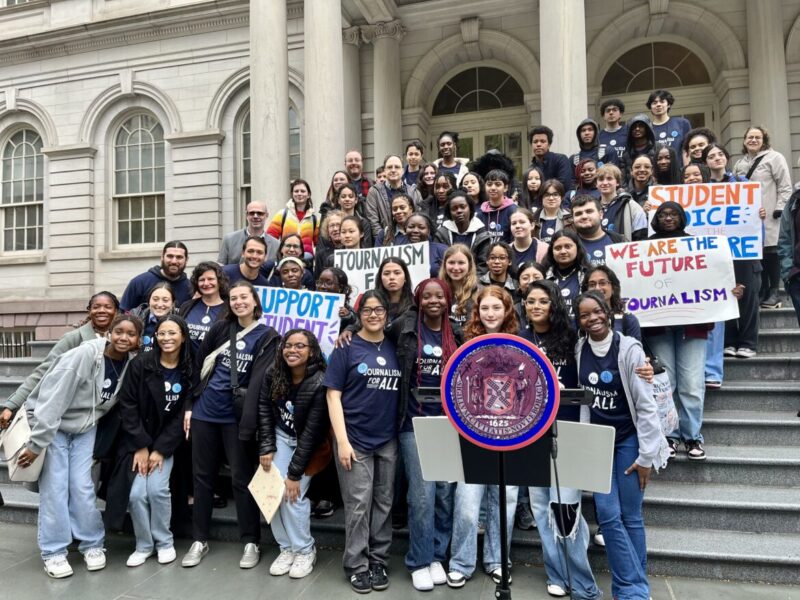
Dozens of young New Yorkers gathered at City Hall on April 18 calling for the city to expand support for journalism programs and student newspapers at its schools. (Credit: Jeanmarie Evelly/City Limits)
$3 Million to Boost Student Papers in Big Apple
Only 27 percent of public high schools in New York City have a student newspaper, down from roughly 50 percent in 2009, Claire Fahy reported in September for The New York Times.
“The problem is even more stark at schools with many low-income students: Just seven of the 100 public schools with the highest rates of student poverty have student-run publications, according to data from Baruch College. . . .
“The decline in school newspapers is not unique to New York. Across the country, rising costs, changing attitudes toward the news media, difficulties in finding faculty advisers and an emphasis on science, math and technology have led to a dearth of high school journalism programs — particularly at underprivileged schools.
“Seeking to address the problem, local news outlets and universities in states like California, Illinois and Texas have teamed up to prepare teachers to lead electives and workshops for aspiring young journalists.
“And now, New York City will have its own initiative, Journalism for All. The pilot program is a collaboration between the Youth Journalism Coalition, which is run by The Bell, a nonprofit; the City Council; and the Craig Newmark Graduate School of Journalism at the City University of New York. . . .
“Journalism for All, a $3 million initiative funded by the City Council and private donors, is expected to quadruple the number of Black and Latino students in journalism classes at New York City schools, according to Taylor McGraw, the executive director of The Bell, which created the coalition. . . “
$7.5 Million Pledged to Support Nonprofit News
“NewsMatch, the annual fundraising campaign spearheaded by the Institute for Nonprofit News (INN), begins on Nov. 1 with a record amount of funds pledged to bolster local support for independent journalism,” the organization announced Thursday.
 “Eighteen national and regional funders have pledged $7.5 million to NewsMatch, the largest grassroots fundraising campaign to support nonprofit news in the U.S. Since 2017, participating news organizations in the INN Network have leveraged $31 million in NewsMatch funding to help generate nearly $300 million in support from their communities. . . .
“Eighteen national and regional funders have pledged $7.5 million to NewsMatch, the largest grassroots fundraising campaign to support nonprofit news in the U.S. Since 2017, participating news organizations in the INN Network have leveraged $31 million in NewsMatch funding to help generate nearly $300 million in support from their communities. . . .
“This year, 391 news organizations plan to participate in NewsMatch — 14% more than in 2023. These outlets represent most U.S. states and territories and often cover historically marginalized communities; 23% (90 outlets) indicated that people of color comprise a majority of their audience or that their organizations spend a majority of their resources producing news reports for people of color; a quarter (98) indicated their organizations are led by people of color. . . .”
Decisions on applications are to be announced in mid-December.
- Sophie Culpepper, “Neither feast nor famine”: In 2023, nonprofit news continued to grow — but the audience picture is more complicated (June 10)
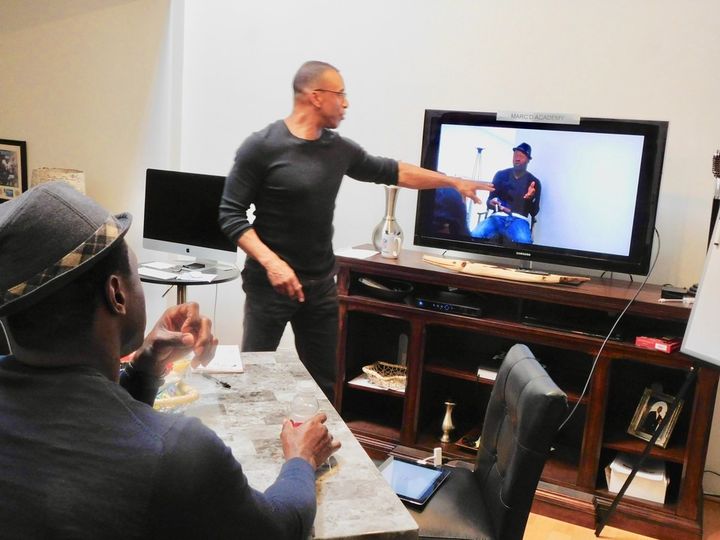
Former NFL defensive back Nick Ferguson learns the rules on using one’s hands while talking on television. (Courtesy Ryan Watts.)
Must Broadcasters Imagine the Audience is White?
 “Journalists often assume that their primary audience is white. Much has been written about how this assumption shapes marketing strategies and editorial decisions. Less attention has been paid to how the imagined audience influences journalists’ appearance and vocal delivery,” Elia Powers (pictured) of Towson University wrote Oct 24 for Nieman Lab. “This topic interests me as a professor who teaches podcasting and studies self-presentation norms. . . .”
“Journalists often assume that their primary audience is white. Much has been written about how this assumption shapes marketing strategies and editorial decisions. Less attention has been paid to how the imagined audience influences journalists’ appearance and vocal delivery,” Elia Powers (pictured) of Towson University wrote Oct 24 for Nieman Lab. “This topic interests me as a professor who teaches podcasting and studies self-presentation norms. . . .”
“Research suggests that television news remains most popular among less-educated audiences,” continued Powers, author of “Performing the News: Identity, Authority, and the Myth of Neutrality.”
“Viewers are racially diverse, but the imagined viewer often isn’t. An Asian television journalist recalled that at her former station, a photo of the target audience member — a white, suburban, middle-aged mother — was pinned to a conference room wall. Wherever the journalist worked, she knew the target viewer profile, and it ‘never reflected someone who looked like me.’ She said in local television news, ‘you’re trained very early to know that your audience is probably white, probably in the suburbs, and probably middle class.’ . . . . .
“That’s less the case for public radio-affiliated podcasts and podcasting in general, which tends to attract younger, more diverse listeners. When a journalist left public radio to start her own podcast studio, the listener she and her colleagues imagined was a 26-year-old Afro-Latina daughter of immigrant parents who is the first in her family to graduate college — the kind of listener that audience research showed ‘wasn’t being served well by traditional radio.’ . . .
Conclusion:” Research shows that exposure to different types of voices and appearance attributes can help reduce bias and stigma. News outlets can help normalize diverse forms of self-presentation and attract audiences who have previously felt unrepresented. Many are vowing to do so, though as one journalist noted, even when public radio stations promise to target diverse communities, “there’s always a sentence in there about ‘and maintain our current audience’
“Progress is slow, but the imagined audience may finally be expanding.”
Miami Radio Legend Jill Tracey Dies at 60
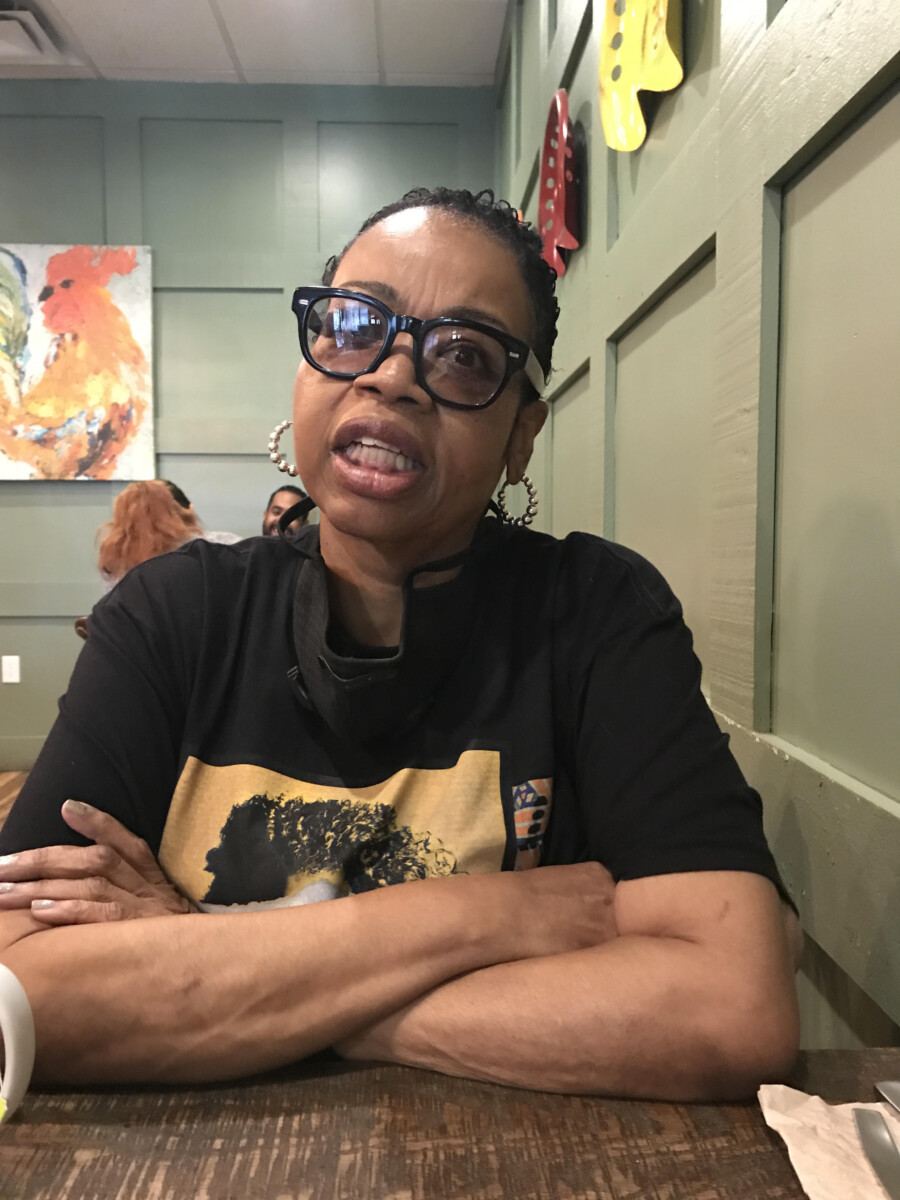 “Known for her catchphrase, ‘Love ya! Mean it!’, Jill Tracey (pictured, by Collette Fournier) was an institution in South Florida radio who gave listeners all the juiciest celebrity gossip as well as a platform to discuss the issues of the day,” Raisa Habersham reported Friday for the Miami Herald. She was found unresponsive in her home that day, WTVJ-TV reported. Tracey was 60.
“Known for her catchphrase, ‘Love ya! Mean it!’, Jill Tracey (pictured, by Collette Fournier) was an institution in South Florida radio who gave listeners all the juiciest celebrity gossip as well as a platform to discuss the issues of the day,” Raisa Habersham reported Friday for the Miami Herald. She was found unresponsive in her home that day, WTVJ-TV reported. Tracey was 60.
The South Florida chapter of the National Association of Black Journalists said, “Jill’s remarkable career included serving as News Director at HOT 105, where she not only showcased her exceptional talent but also inspired countless others in the industry. As past president of the National Association of Black Journalists (NABJ) South Florida chapter, she championed diversity and excellence in journalism, leaving a lasting impact on the community she loved.
“Her commitment to public service was evident in her recent candidacy, where she sought to make a difference in the lives of her fellow residents. Despite facing health challenges in recent times, Jill’s resilience and determination never wavered.” Tracey was running for Hollywood’s District 2 commissioner, hoping to replace the city’s first Black commissioner Linda Anderson.
The Herald story also said, “Jill Tracey was with WHQT HOT 105 FM on and off for more than 30 years in various roles but was laid off in June along with veteran radio personality, James T. Most recently she hosted a community engagement show on the weekend called Hot Talk with Jill Tracey and the daily morning show from 6-10 a.m. . . .
“Tracey started her career as a South Beach gossip columnist, which led to radio and TV jobs that took her to Los Angeles, New York, Atlanta and back to Miami. During the late ‘90s Tracey’s life as a radio star began to rise on WEDR 99 Jamz. There wasn’t a club opening she didn’t attend, a celebrity who could sneak into town without her finding out or some dirt she couldn’t dig up.
“A 1997 Herald profile described Tracey, who for years hosted a celebrity gossip segment on air called ‘The 4-1-1,’ as a “gossip guru, entertainment reporter and social butterfly. Tracey’s business is other folks’ business.”
More to come
To subscribe at no cost, please send an email to journal-isms+subscribe@groups.io and say who you are.
Facebook users: “Like” “Richard Prince’s Journal-isms” on Facebook.
Follow Richard Prince on Twitter @princeeditor
Richard Prince’s Journal-isms originates from Washington. It began in print before most of us knew what the internet was, and it would like to be referred to as a “column.” Any views expressed in the column are those of the person or organization quoted and not those of any other entity. Send tips, comments and concerns to Richard Prince at journal-isms+owner@
View previous columns (after Feb. 13, 2016).
View previous columns (before Feb. 13, 2016)
- Diversity’s Greatest Hits, 2018 (Jan. 4, 2019)
- Book Notes: Is Taking a Knee Really All That? (Dec. 20, 2018)
- Book Notes: Challenging ’45’ and Proudly Telling the Story (Dec. 18, 2018)
- Book Notes: Get Down With the Legends! (Dec. 11, 2018)
- Journalist Richard Prince w/Joe Madison (Sirius XM, April 18, 2018) (podcast)
- Richard Prince (journalist) (Wikipedia entry)
- February 2018 Podcast: Richard “Dick” Prince on the need for newsroom diversity (Gabriel Greschler, Student Press Law Center, Feb. 26, 2018)
- An advocate for diversity in the media is still pressing for representation, (Courtland Milloy, Washington Post, Nov. 28, 2017)
- Morgan Global Journalism Review: Journal-isms Journeys On (Aug. 31, 2017)
- Journal-isms’ Richard Prince Wants Your Ideas (FishbowlDC, Feb. 26, 2016)
-
Richard Prince with Charlayne Hunter-Gault, “PBS NewsHour,” “What stagnant diversity means for America’s newsrooms” (Dec. 15, 2015)
- Book Notes: Journalists Follow Their Passions
- Book Notes: Journalists Who Rocked Their World
- Book Notes: Hands Up! Read This!
- Book Notes: New Cosby Bio Looks Like a Best-Seller
- Journo-diversity advocate turns attention to Ezra Klein project (Erik Wemple, Washington Post, March 5, 2014)

